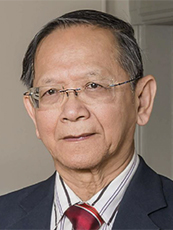Speakers

Prof. Peter KAM
Australia
Degrees.
MBBS, MD, FRCA, FANZCA, FCARCSI, FHKCA(Hon)
Awards
Orton Medal 2010, ANZCA for teaching and educational activities in Australasia
Clinical Interests:
Anaesthesia for isolated limb perfusion/infusion for advanced melanoma, Anaesthesia for liver surgery, Perioperative Prehabilitation
Research:
1. Platelet function studies in liver transplant surgery, pre-eclampsia, and haemodilution
2. Pharmacokinetics of local anaesthetics in TAP blocks
3. Mechanism of action of clonidine in prolonging LA activity
4. Perioperative prehabilitation
Teaching:
1. Invited lecturer at NZ Primary Course at Hamilton, Waikato, NZ
2. Visiting lecturer, HKCA Courses for the Intermediate and Final Examinations of HKCA Examinations
3. Visiting Lecturer, National University of Singapore
4, Visiting lecturer to Primary and Final Courses at University of Malaya
Authorship:
1. Physiology textbook for the Primary. “Principles of Physiology for Anaesthetists” 2nd edition awarded 1st prize in the 2008 BMA Book Competition in the anaesthesia book section
2. Chapters in 4 textbooks on Melanoma
3. Contributor to NHMRC/ANZCA guidelines in Acute Pain
Publications:
1. 145 articles in peer reviewed journal
h-index = 51
Reviewer for
BJA, Anesth Analgesia, Anaesth Intensive Care, Med J Aust.
Critical thinking is the intellectually disciplined process of actively and skilfully conceptualizing, applying, analyzing, synthesizing, and/or evaluating information gathered from, or generated by, observation, experience, reflection, reasoning, or communication, as a guide to belief and action.
The alternative styles of thinking are discussed. Bloom’s taxonomy of learning is applied to highlight higher order of thinking. The hallmark of critical thinking requires asking the right questions to obtain the right information. The 5 Ws and 1H pneumonic [what, why, who, where, when, and how] can be applied to help the process.
A simple technique to guide students through the critical thinking involves:
I Identify the Problem: What is the real question we are facing?
D Deepen understanding: What are the facts that frame this problem?
E Enumerate the Choices: What are plausible options?
A Analyze Options: What is the best course of action?
S Scrutinize process and Self-Correct: Look at it again … What did we miss?
A simple model to generate critical thinking in an example in anaesthesia to highlight basic concepts in critical thinking is described to help trainees in their exam preparation [reading and writing]. Methods to develop these skills will be discussed. Repetition and practise are essential to develop critical thinking skills. Explicit feedback is important.
The philosophical aspects and statistical background of critical thinking will not be covered in this pragmatic talk.